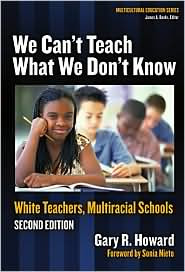Serving New Immigrant Communities in the Library by Sondra Cuban and Kathleen De La Pea McCook examines the role of the library in today’s world in regard to immigration. Specifically for Latino populations this has great significance both for the library and for the immigrant community. Of the top ten countries sending immigrants to the US, five are Spanish speaking. There are currently 35 million adults in the US whose first language is not English, and this number is expected to keep growing.
The Latino population also grows more rapidly than other segments and accounts for half of the population growth in the country. Some areas like the Southwest and West are accustomed to this, but other areas like Greensboro, NC, Atlanta, GA and Las Vegas, NV, that are not traditionally thought of as hosts to large Latino populations have experienced ethnic shifts.
An ALA study showed that 58% of Latinos used the library. Libraries are usually inclusive, adaptable and flexible and, more often than not, have a true desire to help. Libraries are open places where at no charge immigrants can read, improve their language skills, have access to computers, form a bond with others in the community and experience and share the enjoyment books and films with their children.
Because 62% of low wage workers are considered to have limited English proficiency (LEP), these library opportunities become more important. No where else fulfills this role either because they charge money, are open fewer hours, require registration or proof of citizenship or immigration status and/or require higher literacy skills. The library is a safe place to go for information and it is part of the historic role/mission of library to provide the services that immigrants need to adapt to our society. When there are fewer educational opportunities in traditional society, there is a greater demand on libraries, and society really expects libraries to fulfill this role.
The Center for Immigration Studies finds that assimilation is not as quick as before because an atmosphere of patriotism mixed suspicion or skepticism in the general public sometimes borders on hostility toward those perceived as foreign. Another problem not often considered is that sometimes there is tension between legal and illegal immigrants in a community. And finally, modern technology makes it easier for immigrant populations to maintain contact with their countries of origin. All of this can have a profound psychological impact on the populations and should be taken into consideration when creating library programming
The authors are strong proponents of community assessment, outreach, and committed conditions to ensure that policies and services can be provided, and being proactive is the key. This book contains many examples and anecdotes from their research that can be adapted in practical and positive ways by libraries everywhere.
.Serving New Immigrant Communities in the Library
By Sondra Cuban, Kathleen De La Pea McCook. Libraries Unlimited, 2007








